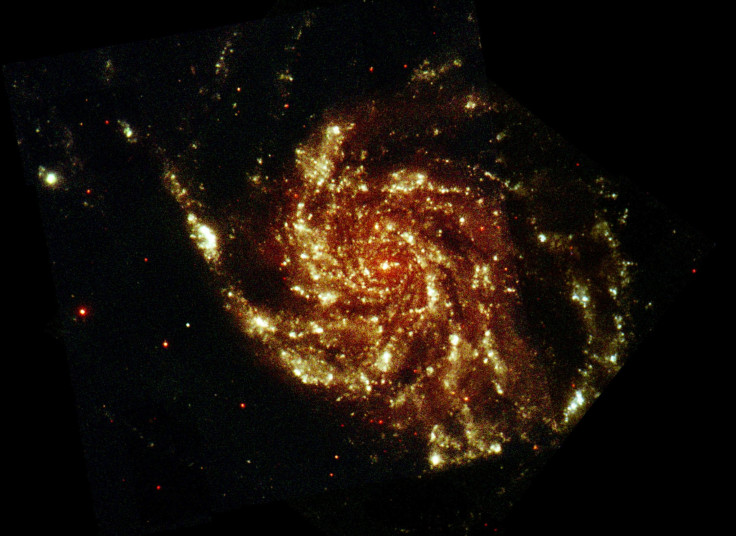Pinwheel Galaxy, M101, Glows In Ultraviolet Picture [PHOTO]
A new photo of the M101 galaxy, also known as the Pinwheel Galaxy, captures the star system in ultraviolet and optical light, which produces a glowing effect. The Pinwheel Galaxy contains close to a trillion stars and is double the size of the Milky Way Galaxy.

The Pinwheel Galaxy photo was taken by the European Space Agency’s XMM-Newton’s optical telescope. The photo is a composite of ultraviolet and optical wavelengths using green, red and blue filters. M101 is a face-on spiral galaxy, which means the full spiral shape is visible and is 21 million light-years way, located in the constellation Ursa Major. The Pinwheel Galaxy is also home to a recently discovered supernova, SN 2011fe, which can be seen from Earth.
According to the ESA press release, M101 may contain a billion stars that are similar to the Sun. Many of these stars are extremely hot, burning bright and giving off large amounts of ultraviolet radiation. In the new photo, the large group of stars can be clearly seen at the galaxy’s center while new stars are beginning to form around the edges of the Pinwheel Galaxy.
M101 is still active, giving birth to plenty of new star formations. Many of the stars within the galaxy are large with a lifespan of a few million years, notes the press release, which makes studying the ultraviolet radiation extremely important. By measuring the radiation produced by the galaxy, astronomers can get a better understanding of the level of star formation within the galaxy.
The asymmetrical appearance of the Pinwheel Galaxy is not an optical illusion. It is believed that M101 had a near-miss with a companion galaxy, which the asymmetry and also increased the pressure within the galaxy’s spiral arms, thus increasing the star formation activity.
© Copyright IBTimes 2024. All rights reserved.






















